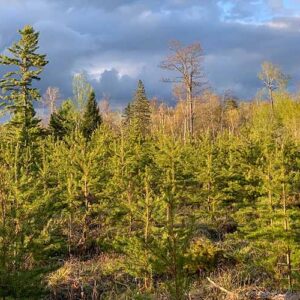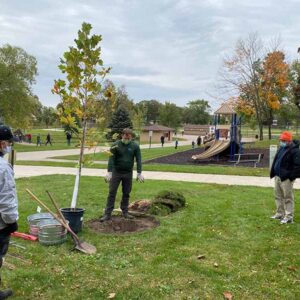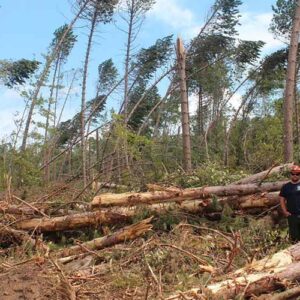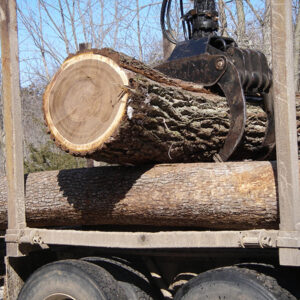WICCI’s Forestry Working Group is designed to share information across the forestry community about climate change impacts, adaptation, and mitigation. We also put information into action by helping foresters and land managers develop real-world actions to prepare for change and manage forest carbon.
Our primary target audience is forestry and natural resources professionals, but other audiences for our work include land managers and owners, forest industry professionals, the academic community, and the interested public.
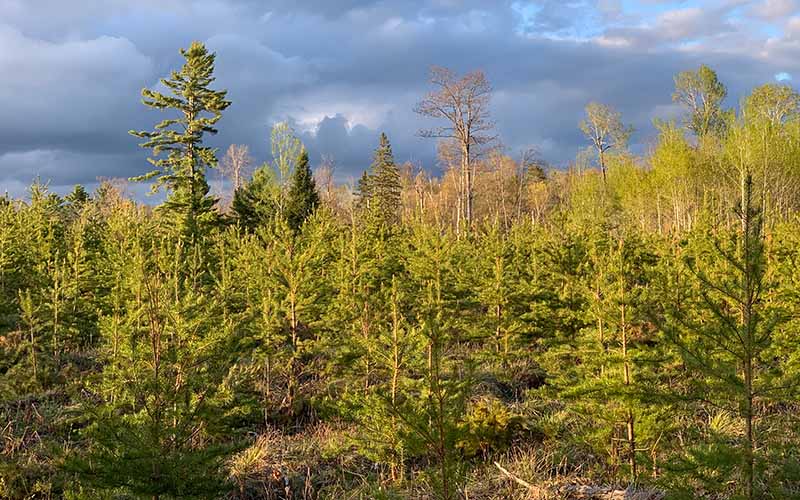
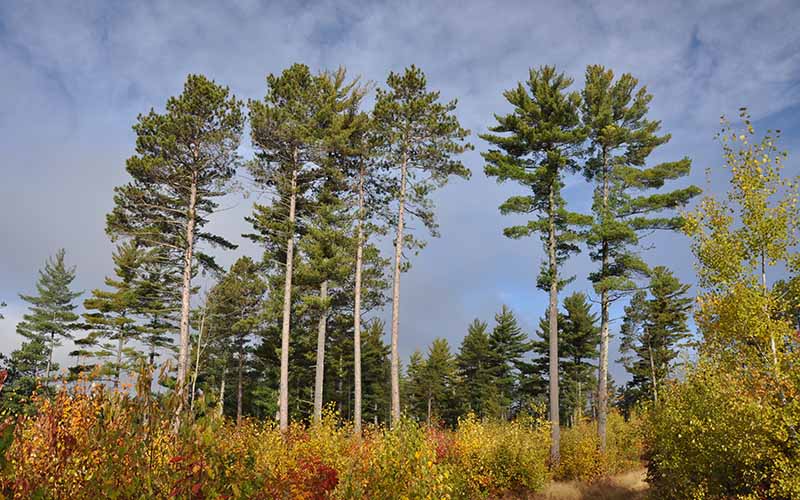
Summary of Issues and Impacts
Wisconsin has 17 million acres of forests, which provide a wide range of ecological, environmental, social, and economic benefits in both rural and urban areas. Forests also are a valuable asset in the fight against climate change, as forests absorb carbon dioxide that can be stored in soil and wood products. Climate change is bringing new challenges to the health and sustainability of our forests.
Examples of Primary Climate Impacts to Wisconsin Forests
Warmer winters are tipping the competitive balance between northern and southern species, providing more opportunity for non-native species, supporting larger deer populations, and making it more difficult to conduct forest management operations.
Larger deer populations are leading to more damage to young trees and understory plants, and deer may be preventing natural forest adaptation by consuming many of the species that are expected to do well in the future (oaks, maples, and pines).
Drought risk may increase for Wisconsin forests, due to a combination of warmer conditions, longer growing seasons, higher evaporation rates, and a larger share of precipitation coming as heavy rainfall.
Heavy precipitation events are becoming more frequent, and these events cause substantial damage to riparian areas as well as forest roads, bridges, and other infrastructure.
Stressed forests may be more susceptible to damage from insect pests and diseases. Native pests and diseases can cause more damage, and new pests may be able to move into Wisconsin as the climate changes.
Recommended Solutions/Strategies
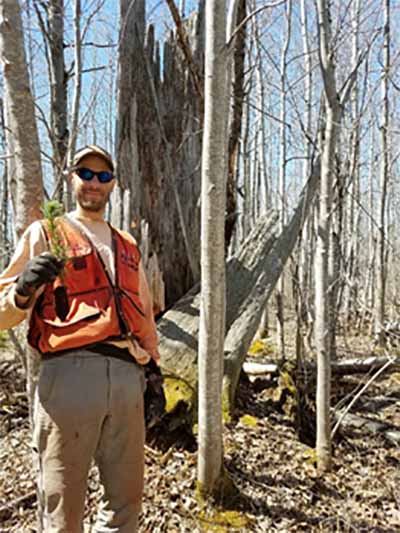
The Forestry Working Group has made recommendations for forestry’s role in climate change adaptation and mitigation. Some of these recommendations were incorporated into the Governor’s Task Force on Climate Change 2020 report (pdf). Priority strategies included:
- Keep forests as forests
- Renew forest cover in rural areas
- Encourage tree planting in urban areas
- Pursue climate-focused forest management
- Support Wisconsin wood product utilization
- Update forest plans at the federal, state, county, tribal, and private lands levels to address climate risks with site-specific strategies.
- Support a holistic deer management program that better recognizes the impacts of deer on forest productivity and results in deer-forest impacts being reflected in deer population goals.
- Recognize and plan for the operational limitations that affect logging and other forestry operations due to shorter periods of frozen ground and longer periods of extreme wet weather.
- Invest in adaptive logging practices and logging equipment to address or minimize limitations and impacts resulting from shorter winters and more wet conditions.
- Increase emphasis on forest restoration and assisted migration of forest species in light of climate change impacts through applied field studies and by increased nursery capacity.
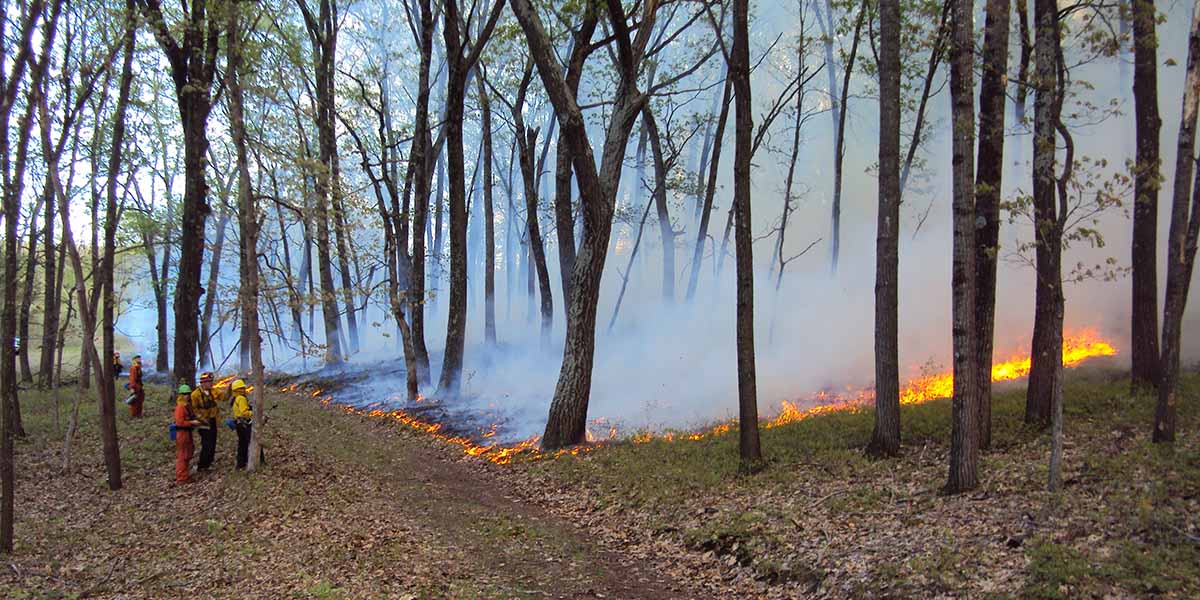
Environmental Climate Justice Issues
Forests are important to all Wisconsin residents, as providers of ecological, economic, recreational, cultural, and health benefits. However, access to those benefits can vary in important ways, causing both environmental and climate injustices. The Forestry Working Group has outlined important ways that climate change impacts to forests might affect environmental and climate justice:
Helping forests adapt to climate change can help ensure that treaty rights are maintained for Wisconsin’s tribal communities. Many tribes in Wisconsin own forest land, and tribes also retain their traditional rights for hunting and gathering across large ceded territories in Wisconsin.
Climate change is affecting culturally significant plants and animals on which Indigenous people rely for spiritual, ceremonial, medicinal, subsistence, and economic needs. Some iconic beings, such as paper birch, may become less abundant or less healthy within reservation or Ceded Territory boundaries.
Equitable distribution of tree canopy is increasingly recognized as an important factor in urban tree-planting decisions. Urban forests can help cities cope with climate change by reducing the impacts of extreme heat and precipitation events, while improving human health and well-being.
Urban forests can be particularly vulnerable to climate change, however, and underserved populations tend to have lower tree canopy cover.
Resources
This is an accordion element with a series of buttons that open and close related content panels.
Bulletins for Forest Managers and Landowners
- Bulletin 1 – The 2021 WICCI Assessment (pdf)
- Bulletin 2 – Forests and White-Tailed Deer (pdf)
- Bulletin 3 – Assisted Migration (pdf)
- Bulletin 4 – Invasive Species (pdf)
- Bulletin 5 – Fire and Carbon (pdf)
- Bulletin 6 – Prescribed Fire (pdf)
- Bulletin 7 – Forest Carbon Overview (pdf)
- Bulletin 8 – Forest Carbon Markets (pdf)
- Bulletin 9 – Forest Carbon Accounting (pdf)
- Bulletin 10 – WI Forest Carbon Programs (pdf)
Documents and Handouts
Adaptation Project Summary: BCPL Oak-Pine Management at Woodboro Lakes (pdf)
Climate Change Adaptation Demonstration: Chequamegon-Nicolet National Forest (pdf)
Climate Change Field Guide for Northern Wisconsin Forests: Site-Level Considerations and Adaptation
Climate Change Field Guide for Southern Wisconsin Forests: Site-Level Considerations and Adaptation
Climate Change Vulnerability Assessment for Northern Wisconsin Forests
Climate Wisconsin 2050: Forestry (pdf)
Private Landowner Climate Scorecard and Actions (pdf)
Tree species handouts (northern, southern, and Driftless areas of Wisconsin)
Videos
Websites
Our Team
Stakeholders and Partners
- Private landowner groups
- Agency forest managers (state, counties, tribes, and federal)
- Private industry (groups like SFI and FISTA, consulting foresters, industrial landowners, mill owners, and loggers)
- Land trusts and other NGOs
- Academic community
Members
- Dan Buckler (co-chair), Wisconsin Department of Natural Resources
- Brad Hutnik (co-chair), Forest Ecologist and Silviculturist, Wisconsin Department of Natural Resources
- Matt Dallman, Director of Conservation, The Nature Conservancy
- Johanna Desprez, Regional Natural Resources Educator, UW-Madison Division of Extension
- Ron Eckstein, Wisconsin Chapter of The Wildlife Society
- Forrest Gibeault, Vice President, Steigerwaldt Land Services
- Stephen Handler, Climate Change Adaptation Specialist, U.S. Forest Service and Northern Institute of Applied Climate Science, stephen.handler@usda.gov
- Scott Hershberger, Forestry Communications Specialist, UW–Madison Division of Extension
- Jason Holmes, Inventory and Analysis Forester, Bayfield County
- Scott O’Donnell, Forest Geneticist, Wisconsin Department of Natural Resources
- Linda Parker, Forest Ecologist, U.S. Forest Service (retired)
- Keith Phelps, Working Lands Forestry Educator, UW–Madison Division of Extension
- Doug Sippl, Chequamegon-Nicolet National Forest
- Jim Swanke, Lecturer, UW-Madison
- Travis Swanson, Forest Ecologist, Great Lakes Indian Fish and Wildlife Commission

